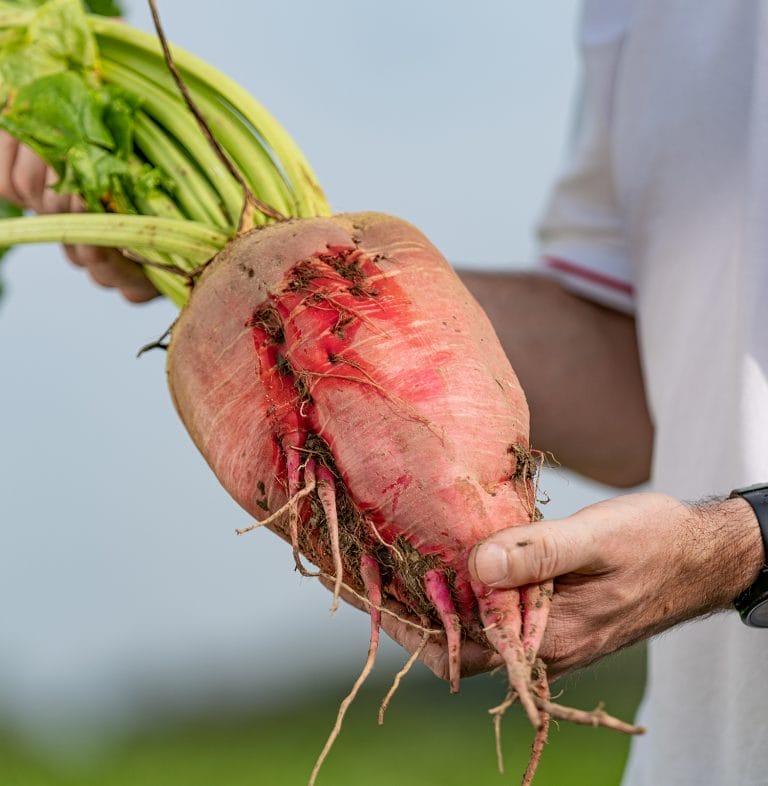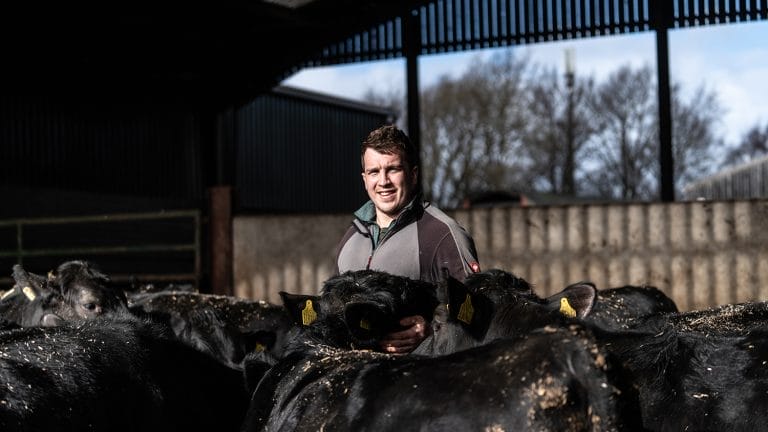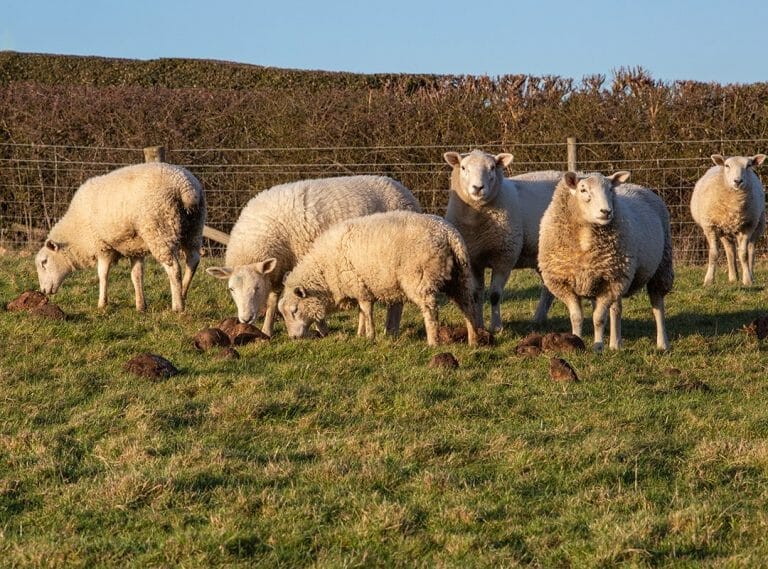
The challenges of dry summers and increasing input prices have tempted one East Lothian beef farmer into trying out fodder beet for finishing his beef cattle.
And Anderson Waddell has no regrets, and for now, he’s committed to a crop each year. In May 2023, his contractors sowed six hectares of plant breeder Limagrain’s Robbos fodder beet and lifted about 120 tonnes per hectare fresh weight (50t/acre) of the crop in November. He’s recorded good intakes of this high energy feed and found an improvement in the finished cattle.
 Anderson runs the 150-hectare beef and arable family farm at Pencaitland, East Lothian, 14 miles southeast of Edinburgh. He buys about 90 six-month old male calves, mainly from one farmer, between October and December each year. Most are pure Charolais, and the rest – about 25% – are Limousin.
Anderson runs the 150-hectare beef and arable family farm at Pencaitland, East Lothian, 14 miles southeast of Edinburgh. He buys about 90 six-month old male calves, mainly from one farmer, between October and December each year. Most are pure Charolais, and the rest – about 25% – are Limousin.
These calves go out to grass the following spring at around 300kg liveweight and are then housed from 430kg to finishing weights of 650kg to 700kg.
Indoors, cattle get a diet of grass silage and homegrown barley in troughs which this year has been mixed with chopped fodder beet.
“By October each year I can have about 280 cattle on the farm, so I need a reliable source of high quality feed,” he says, adding that the dry summers have knocked back silage yields and increasing input prices have affected the cost of growing barley.
“So I was keen to look at alternative home grown feeds to eke out supplies of silage and reduce my reliance on feed barley. I am to be self-sufficient in feed supplies.”
Many friends in the area grow fodder beet so Anderson asked around for some tips and took the recommendation from his seed merchant Dods of Haddington.
“The reliability and consistency of fodder beet yields, and its feed value made it an attractive option, and the variety Robbos, which is tried and tested was recommended and a lot around here grow it,” he adds. “So it seemed like a good option to start with.”
The crop was sown into prepared land following barley. Anderson applied plenty of dung on the stubble prior to ploughing and preparing the seed bad.
“Input costs after sowing were relatively small – just three weed treatments were applied between May and June. Establishment was good and despite some dry conditions, the crop kept growing.”
His contractor lifted the crop in November – which Anderson admits was a bit late in view of the wet conditions. “But it yielded well and it’s certainly taken pressure off the silage and barley. Cattle have grown well and they’re killing out better.” 
He wants to improve the chopping equipment – last winter he used a Ritchie Root bucket feeder, which was not ideal. “I’ve still a bit to learn with growing and feeding fodder beet but it’s just what I needed in the diet and it’s cost-effective,” he adds.
“And I also have plenty of organic matter on the field to promote soil health ahead of the next crop of spring barley that will be drilled in May. So, fodder beet is giving me just what I wanted from a forage crop – it’s a win-win for now.”


































